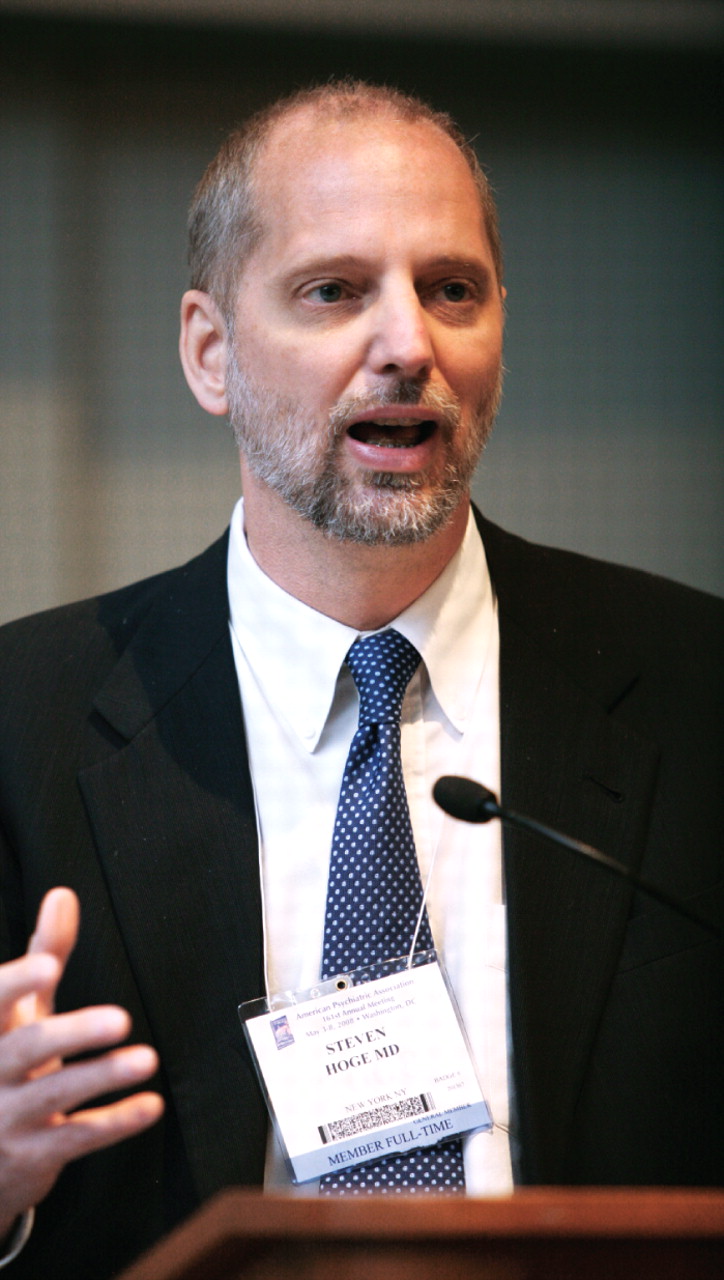The status of psychiatric services for individuals leaving jails and prisons and reentering the community mirrors that of services for deinstitutionalized patients in the community 30 years ago, said forensic psychiatrist Ken Hoge, M.D.
Which is to say the situation is not good.
In fact, “abysmal” is how Hoge described it last month at a symposium titled “Hot Topics in Psychiatry and Law” at APA's 2008 annual meeting.
“Five out of six people reentering the community do not receive any services at all, and recidivism is high,” Hoge said. “Even in those areas of the country that have excellent outpatient mental health services—which is not the norm—the impact” on reincarceration rates among the mentally ill is essentially zero. Whatever we are doing now, it doesn't work.”
Hoge is chair of APA's Task Force on Outpatient Forensic Services and is a clinical professor and director of law and psychiatry at New York University School of Medicine.
Also speaking at the session was Paul Appelbaum, M.D., on legal issues surrounding university students with mental illness, and Debra Pinals, M.D., on legal issues involved with the purchase of a gun by people with a history of mental illness. Appelbaum, who was then chair of APA's Council on Psychiatry and Law, is the Elizabeth K. Dollard Professor of Psychiatry, Medicine, and Law and director of the Division of Psychiatry, Law, and Ethics at Columbia University. Pinals, a member of the Council on Psychiatry and Law, is co-director of the Law and Psychiatry Program and an associate professor of psychiatry at the University of Massachusetts Medical School.
System Punishes, Not Heals
Hoge described an American legal landscape that has turned harshly punitive, with the U.S. far outstripping other countries in rates of incarceration—now up to 700 per 100,000 population.
He also said that the number of mentally ill persons cycling through the nation's jails and prisons is “staggering”—roughly a million every year.
It is not uncommon, he said, for patients in this population to have anti-social personality disorder or schizophrenia in combination with a substance abuse problem.
“You don't see a lot of those people even in the most difficult public mental health situations,” he said, because over time they have been systematically transferred from the public mental health system to the criminal-justice system.
Reentry from prison into the community is difficult enough for people who do not have a mental illness; difficulties are compounded for those who do.
“The system problems in this area are simply astronomical,” Hoge said. “If you think about how much work it takes to get people out of the state mental health system and get them back into the community, then imagine having to coordinate that with a judicial process and a transportation system that has little or no regard for therapeutic ends. People are released every day with mental illness with no regard for how they are going to get treatment when they are released.”
Hoge did close with more hopeful information about a program in California that targeted $50 million to counties to create their own innovative systems for dealing with mentally ill persons reentering the community from jail or prison. Preliminary data comparing the counties' innovative programs with treatment as usual showed small but significant decreases in jail time and improvements in treatment outcome.
Hoge suggested that targeting such innovative services at particular subgroups of patients—such as those who are younger—may prove especially beneficial.
Campus Issues Complicated
In other issues confronting forensic psychiatrists, Appelbaum, who is also a former APA president, outlined the widely publicized case of a student at George Washington University who was suspended from school and barred from campus after seeking treatment at George Washington University Hospital (Psychiatric News, June 2, 2006).
The student sued the university for violation of the Americans With Disabilities Act and two statutes in the District of Columbia prohibiting discrimination against those with mental illness, as well as for emotional distress and invasion of privacy because the student's medical record was reported to the administration after the student admitted himself to the hospital.
The case was settled out of court.
Appelbaum said the case represented an example of “how not to design university policies dealing with students in psychological distress.” But he said it is also illustrative of the difficult place in which colleges and universities find themselves: if a student with mental illness commits a violent act or suicide on campus and it can be proved that the administration knew about the student's condition and did nothing to prevent the act, the university can be sued.
The policy of university officials “is then typically one of 'get those kids off campus,'” Appelbaum said. “They believe they can't be sued if [a suicide or violent act] occurs off campus.”
Clearly, he said, between the risk of high-profile violence or suicide and the liability risks associated with action or inaction, “our universities don't know where to turn.”
Appelbaum said the council and the APA Corresponding Committee on Mental Health on College and University Campuses has set up a joint work group to develop draft guidelines to assist university officials dealing with these issues: the rights of students, the rights of a campus community and the obligations of a college or university, and the appropriate legal treatment of sensitive information, among others.
Pinals said the shootings last year at Virginia Tech also highlight the ambiguous nature of laws surrounding the purchase of guns by people with mental illness or a history of mental illness.
Pinals said the National Instant Criminal Background Check system, which was instituted in 1998 as part of the Brady Handgun Violence Prevention Act, is a database of people prohibited from purchasing firearms. The database, to which states can contribute if they wish, includes some individuals with mental illness. After the Virginia Tech shootings, many people questioned how the shooter—who had a history of mental illness—had gotten access to firearms.
“It turns out that the student had been committed to involuntar y outpatient treatment,” Pinals said. “For registry purposes in the database, that was not considered the same as involuntary inpatient treatment.”
Moreover, not all states have contributed to the database registry. As a consequence, a recently passed federal law mandates states to develop a database of people who are prohibited from purchasing certain firearms, including individuals with particular mental health histories (Psychiatric News, February 1).
So where does APA stand on these issues?
“It was very clear to us as psychiatrists that we need to take a stand that supports efforts to prevent violence,” Pinals said. But at the same time, she said, there is a fine line between protecting the community and protecting the rights of people who may have had a mental illness in the past but may be without risk of violence today.
She said APA's Council on Psychiatry and Law is wrestling with issues such as who should qualify to be in such a database and for how long, whether there should be procedures for removing one's name from the database, how to prevent unwarranted use of registry information, and especially whether a database registry is the best way to prevent violence.
She said the council is working on a draft resource document that it hopes to have completed by September for review at APA's fall component meetings.▪

